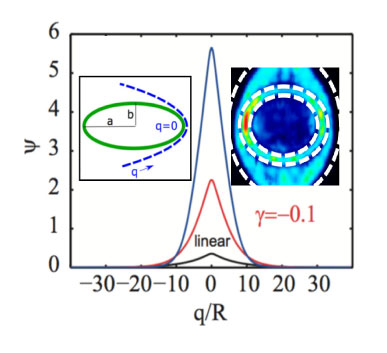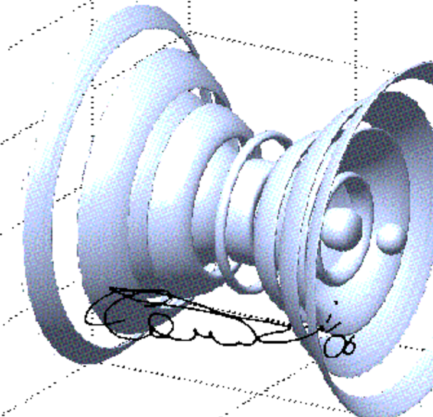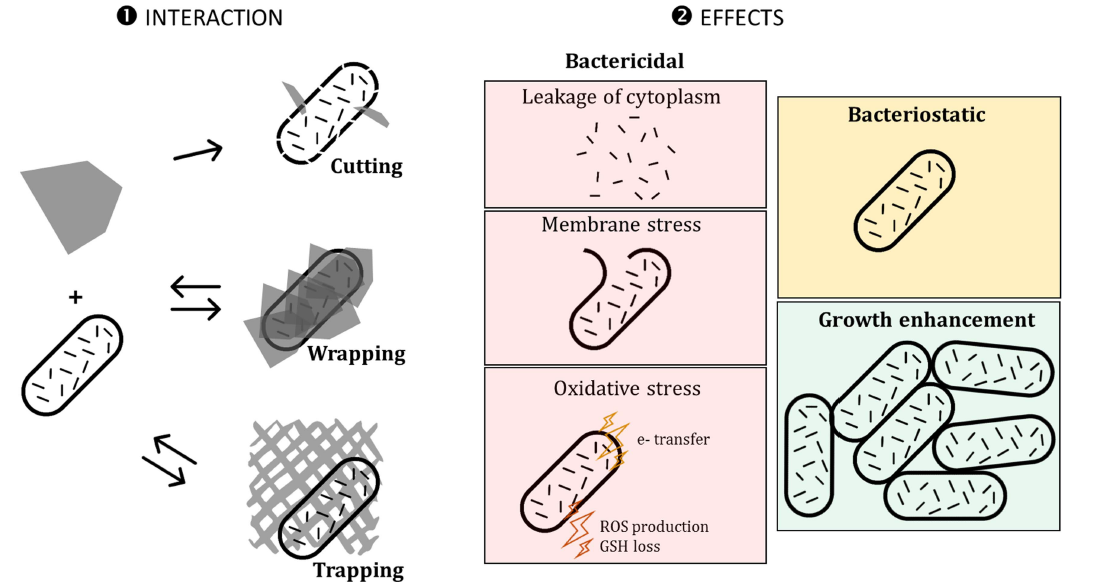A paper by Hong et al reports about lasing emission on modes sustained by local curvature.
The use of geometrical constraints opens many new perspectives in photonics and in fundamental studies of nonlinear waves. By implementing surface structures in vertical cavity surface emitting lasers as manifolds for curved space, we experimentally study the impacts of geometrical constraints on nonlinear wave localization. We observe localized waves pinned to the maximal curvature in an elliptical-ring, and confirm the reduction in the localization length of waves by measuring near and far field patterns, as well as the corresponding dispersion relation. Theoretically, analyses based on a dissipative model with a parabola curve give good agreement remarkably to experimental measurement on the transition from delocalized to localized waves. The introduction of curved geometry allows to control and design lasing modes in the nonlinear regime.



